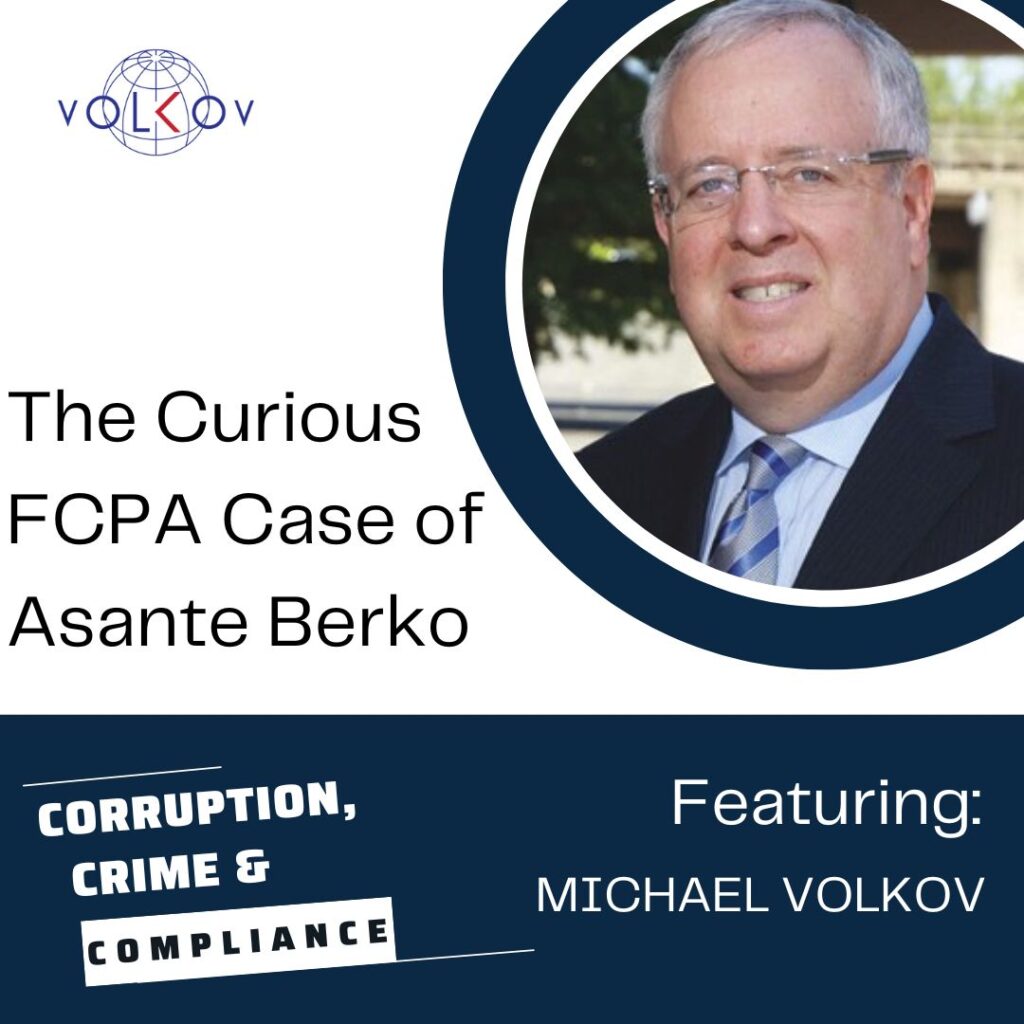We are exploring the Danske Bank A/S (Danske Bank), AML enforcement action in which Danske Bank pled guilty this week and agreed to forfeit $2 billion to resolve the US investigation into its fraud on US banks. According to the Department of Justice (DOJ) Press Release, “Danske Bank defrauded U.S. banks regarding Danske Bank Estonia’s customers and anti-money laundering controls to facilitate access to the U.S. financial system for Danske Bank Estonia’s high-risk customers, who resided outside of Estonia – including in Russia.” Danske Bank also settled with the Securities and Exchange Commission (SEC) who said, in their Press Release, the Bank misled investors about its anti-money laundering (AML) compliance program in its Estonian branch and failed to disclose the risks posed by the program’s significant deficiencies.
How did it start to go wrong?
Interestingly, and most significantly for compliance professionals, the trouble for Danske Bank started with an acquisition. According to the Plea Agreement, “Danske Bank acquired Finland-based Sampo Bank in 2007, including Sampo Bank’s large operation in Estonia. A significant part of Sampo Bank’s Estonia business was providing banking services to non-resident customers, that is, companies and individuals residing outside Estonia, including in Russia. DANSKE BANK knew this was a large part of Sampo Bank’s Estonian business model and continued this business after acquiring Sampo Bank. The non-resident portfolio (“NRP”) was, by far, Danske Bank Estonia’s most lucrative business line, generating, over the life of the branch, over 50% of Danske Bank Estonia’s profits. DANSKE BANK knew that many NRP customers conducted transactions in U.S. dollars, which required Danske Bank Estonia to use U.S. banks and bank accounts to process those transactions. By December 2013, DANSKE BANK knew that the NRP was high-risk because, among other reasons, its customers resided in high-risk jurisdictions, frequently used shell companies to shield the identity of their ultimate beneficial owner or the sender or recipient of transactions, and engaged in suspicious transactions through U.S. banks.”
In addition to a failure of due diligence in the pre-acquisition phase, Danske Bank did nothing post acquisition to make sure the new Estonian branch complied with basic AML. Danske Bank Estonia had an inadequate and ineffective compliance program that applied to all customers. As noted in the Plea Agreement, “Danske Bank Estonia, through its International Banking Group (“IBG”), attracted NRP customers by ensuring that they could transfer large amounts of money through Danske Bank Estonia with very little, if any, oversight or scrutiny. IBG employees conspired with their customers to shield the true nature of their transactions, including by assisting customers to conceal beneficial owners by establishing accounts for known shell companies and sometimes creating shell companies for customers in exchange for a “consulting fee.””
Actual Knowledge of Compliance Failures
To read the settlement documents it is clear that Danske Bank was making so much money laundering its Russian clients that it did everything it could do so to avoid making any changes which would kill the golden goose. As early as 2007, Danske Bank was aware a substantial portion of Danske Estonian branch’s customers were non-residents of Estonia, the NRP accounts, and that many of the NRP customers were from Russia and other former Soviet-bloc countries. These NRP customers’ practices included well-known red flags for potential money laundering, for example, frequent use of offshore LLPs and nominee directors to obscure or conceal beneficial ownership information, use of unregulated intermediaries to carry out transactions on behalf of unknown clients, and ties to jurisdictions with enhanced money laundering risks. Yet both Danske Bank Estonia and the parent Danske Bank maintained that “all is well” (yes cue the Animal House riot scene about now).
It was not as if Danske Bank was unaware of its Estonia branch shortcomings and failures. According to the SEC Complaint, “in 2007, the Danish Financial Supervisory Authority (“Danish FSA”) contacted Danske with concerns it had received from the Bank of Russia about NRP customers allegedly engaged in illicit transactions through Danske Estonia, including money laundering which was discussed by Danske’s Board of Directors in August 2007.” In light of the Danish FSA’s warnings, Danske conducted an internal audit of Danske Estonia’s transactions in 2007. That audit did not assess whether Danske Estonia complied with AML and Know-Your-Customer (KYC) procedures required under applicable laws and regulations, but the audit report provided to Danske management noted that Danske Estonia’s procedures in this area were “thin.” The 2007 audit recommended to Danske management that Danske undertake further investigation of Danske Estonia’s practices to ensure compliance with applicable law. Further, in March and April of the same year, the Estonian FSA had carried out an inspection at Danske Estonia and issued an inspection report on August 16, 2007, which found that the Estonian branch was not compliant with its legal obligations.
These compliance shortcomings were in four general areas. Danske Bank Estonia used foreign consultants and intermediaries to recruit customers and outsourced its legal obligations to conduct due diligence and obtain KYC information to third parties. Second, Danske Bank management knew that Danske Estonia was offering certain high-risk services and products associated with suspicious activity which Danske did not permit other branches to offer. Third, Danske Bank knew that its IT platform was incompatible with Danske’s IT platform. Danske knew or was reckless in not knowing that Danske Estonia could not conduct automated AML or KYC controls, such as automated customer screening and automated transaction monitoring. Fourth, Danske Bank Estonia’s AML and compliance control framework did not adequately mitigate the risks of the NRP portfolio and Danske failed to provide effective supervisory oversight. Danske Estonia’s compliance and AML departments were structured differently than at other Danske branch and reported directly to Danske Estonia’s branch manager with dotted line reporting to Danske’s compliance and AML departments. As a result, Danske Estonia’s compliance and AML functions were not effectively monitored or effectively supervised by Danske.
Tomorrow, the Danske Bank response.






